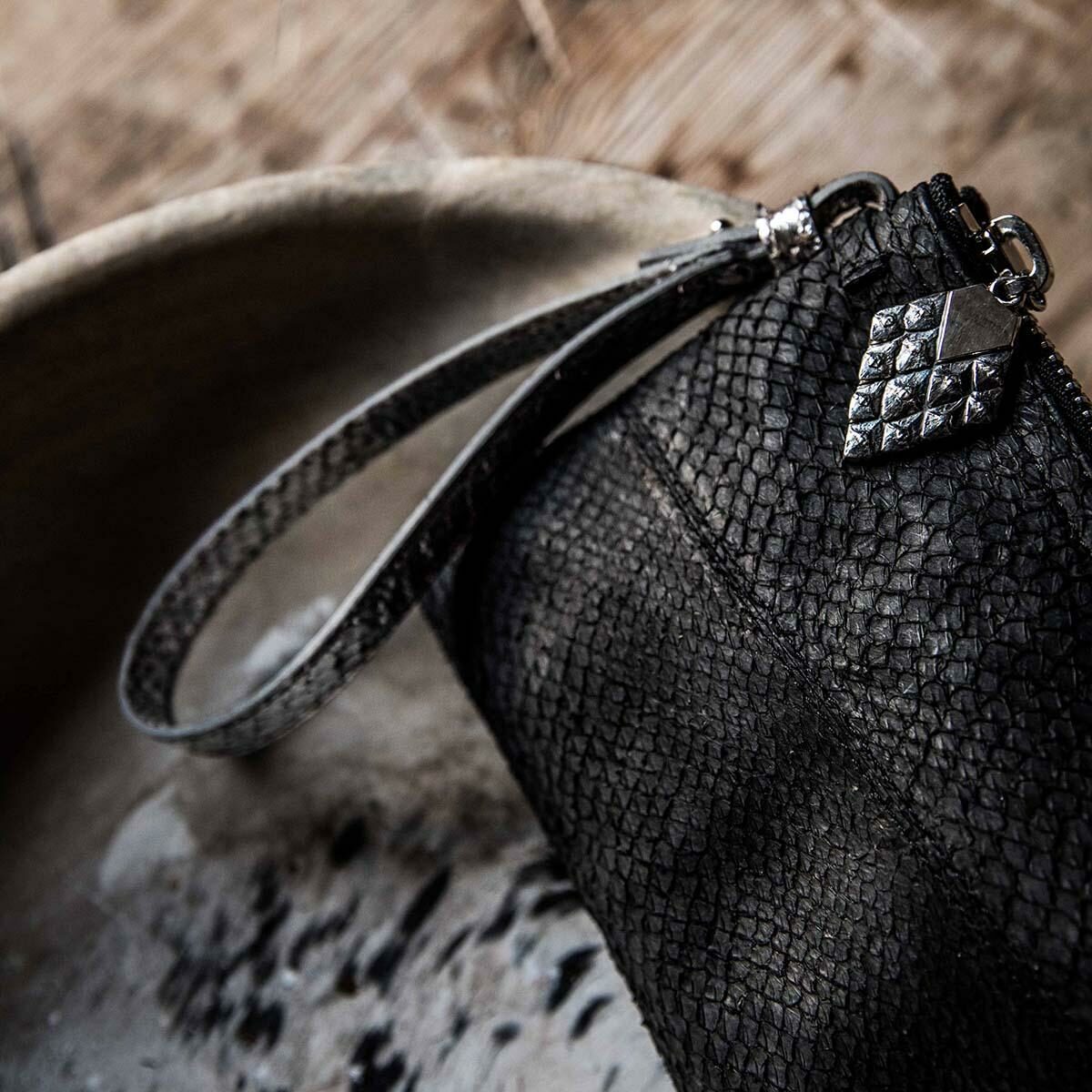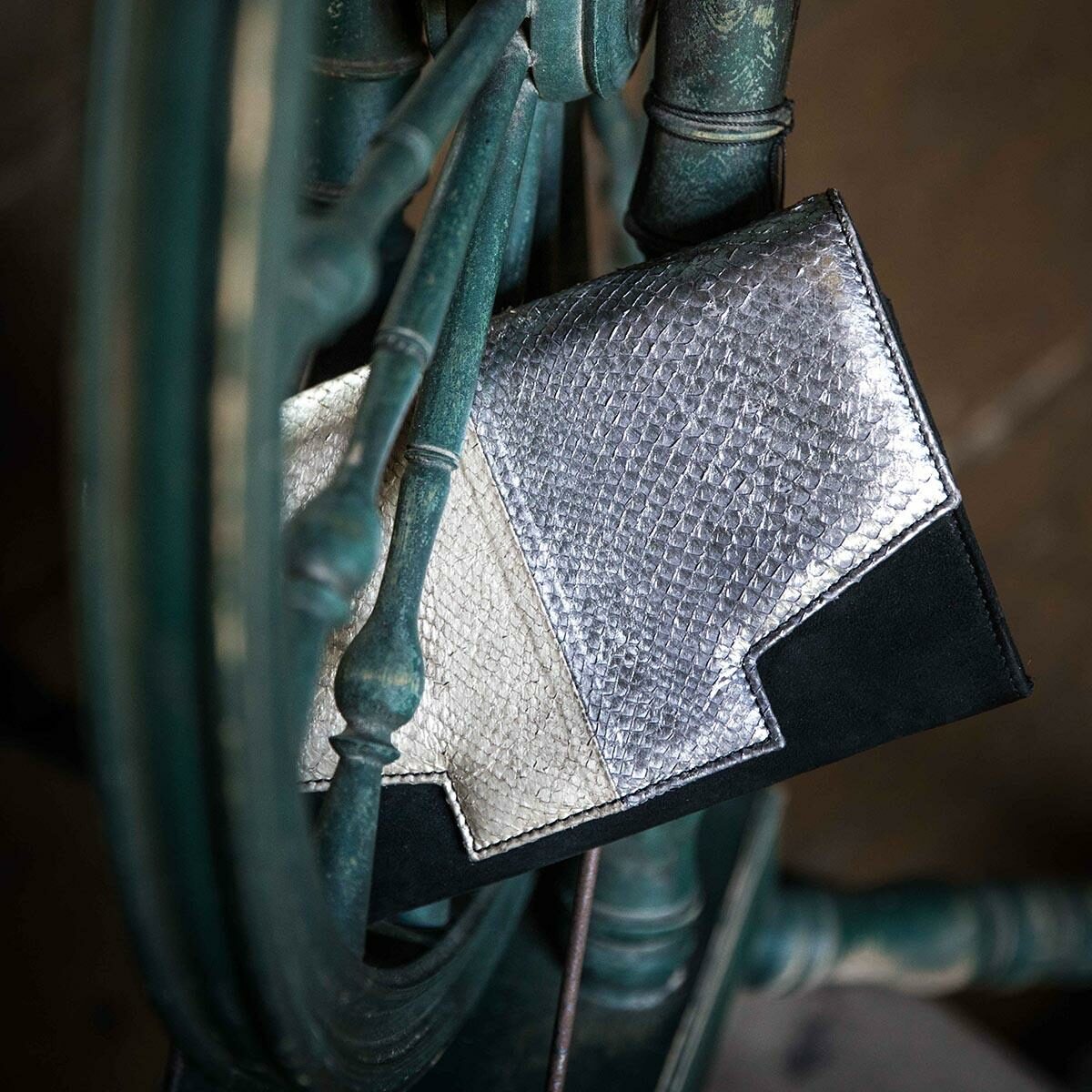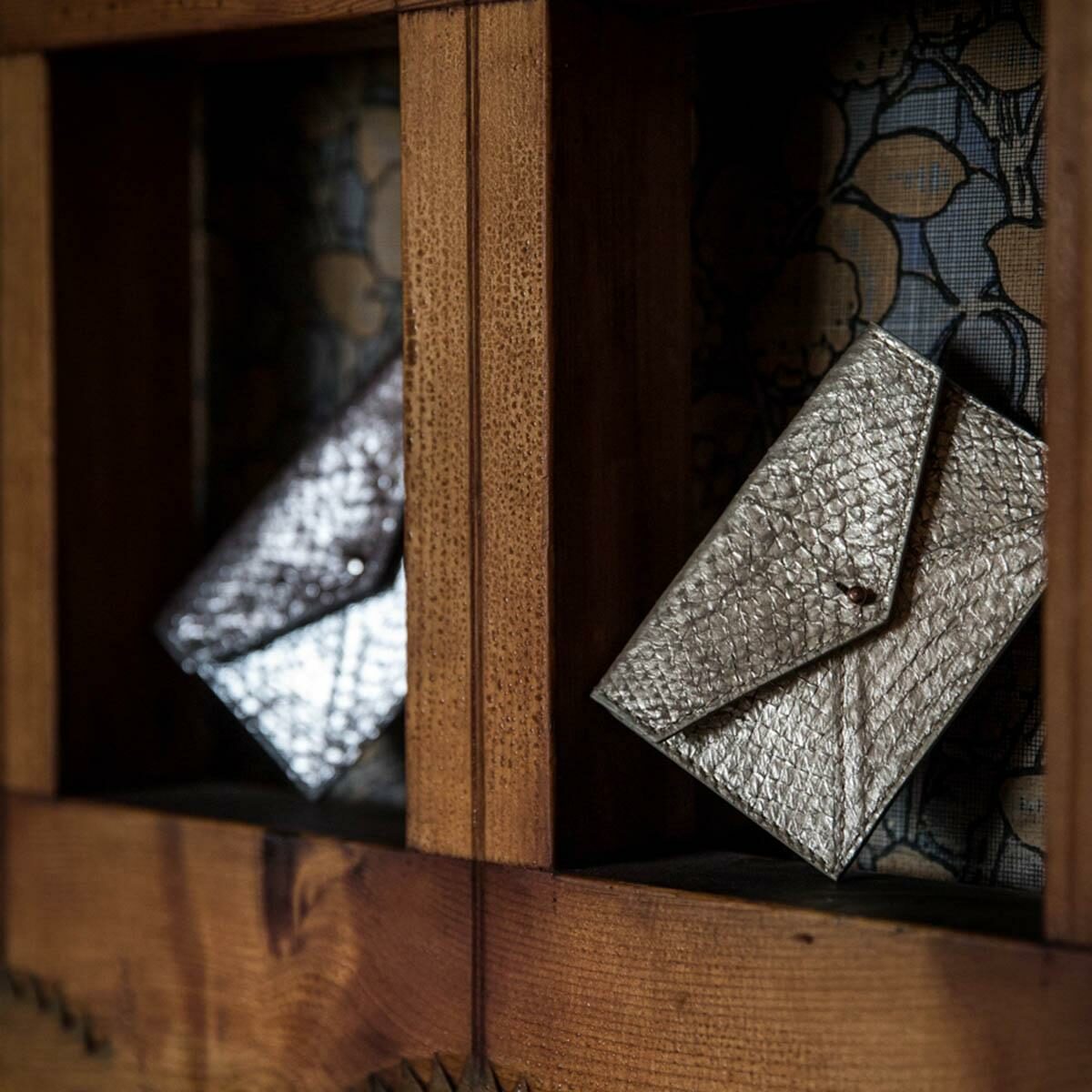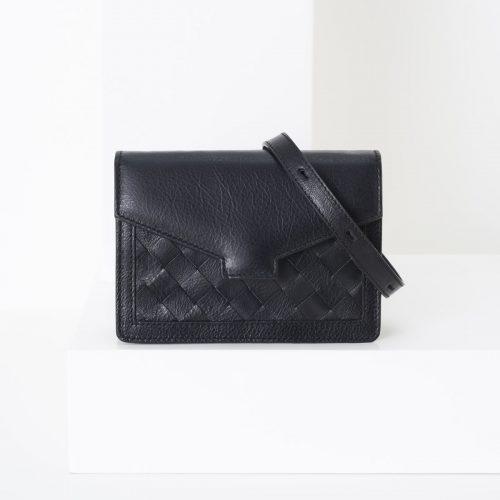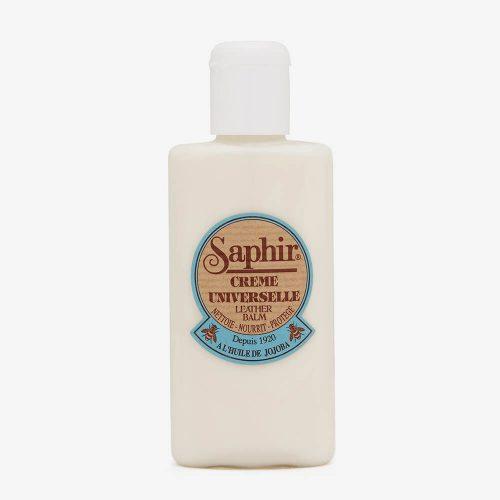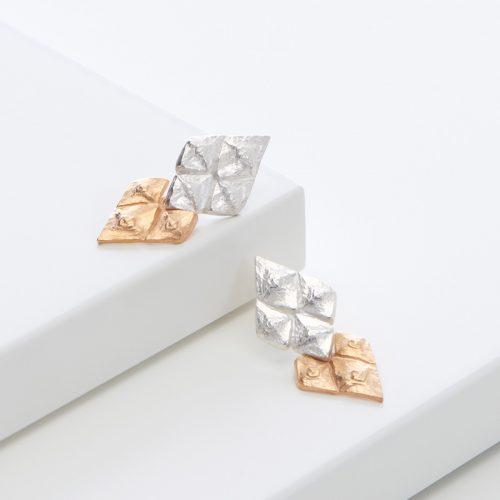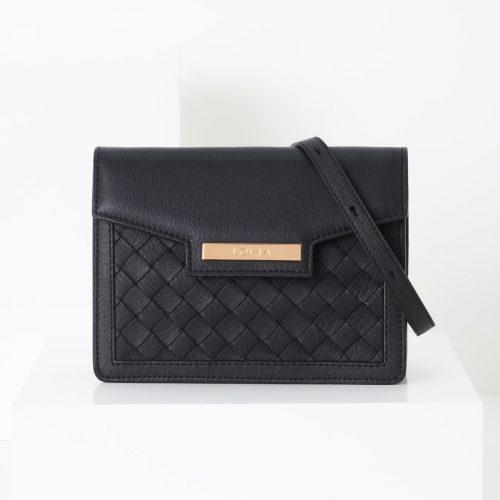Nordic Fish Leather
Perch leather
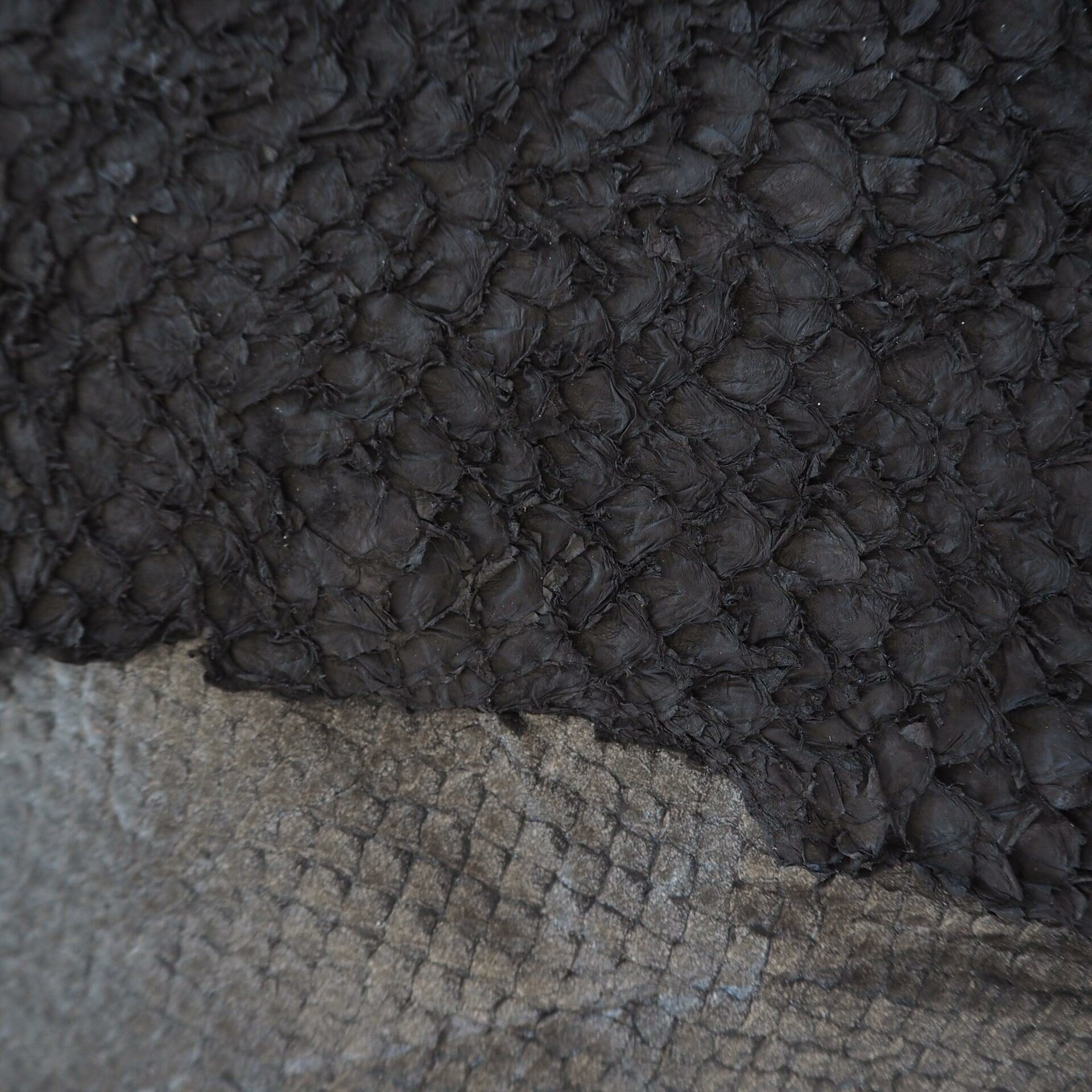
Quality from Iceland
At the heart of circular thinking lies the thought of utilising already existing materials as efficiently as possible instead of creating whole new ones. This is what our collaboration with Nordic Fish Leather also boils down to, as we give fish leather a new life.
Nordic Fish Leather is located in Sauðárkróki, a small but vivid 3000 person community in the fjord of Skagafjörður in Iceland. The business idea behind Nordic Fish Leather was created from the want to bring ancient craftsmanship to modern days by producing high quality fish leather from the excess of the fishing industry. From small epiphanies something greater can be born - one man’s trash can truly become another’s treasure.
ESTABLISHED: 2020
LOCATION: SAUÐÁRKRÓKI, ICELAND
From food industry trash to material for bags
Iceland is a fisher nation surrounded by the ocean, and for centuries they have utilised fish leather as for example material for shoes to keep their feet warm in the cold harsh winters. Excess fish skins are still used rather rarely, and it ends up in the bin, despite its high quality and durability. We want to change this and make the resource utilised to diminish the requirement for new natural resources.
As a material perch skin is thicker than salmon, soft but also incredibly strong. We at Lovia use it in our smaller bags as well as details for larger models, such as front panels and handles. So now you know, how we use the fish skins, but how do they end up in our use in the first place? The perch skins used by Nordic Fish Leather were part of a special project, that was conducted in Tanzania at Lake Victoria. The project taught locals fishing skills and gave them equipment. As they fished the perch from the lake, the locals and their families ate the fish and Nordic Fish Leather (then called Atlantic Leather), took the skins and tanned them to use. The project is now finished and you can no longer find the perch skin from our bags. Instead, we currently have salmon leather in our collection.
Instead of the fate in the trash bin, Nordic Fish Leather collects fish skins and tans and colours them for use. Tanning is the process that makes the leather even more durable and adaptable. After this, the material travels from Iceland via ship freight to the table of our designer Outi in Helsinki.
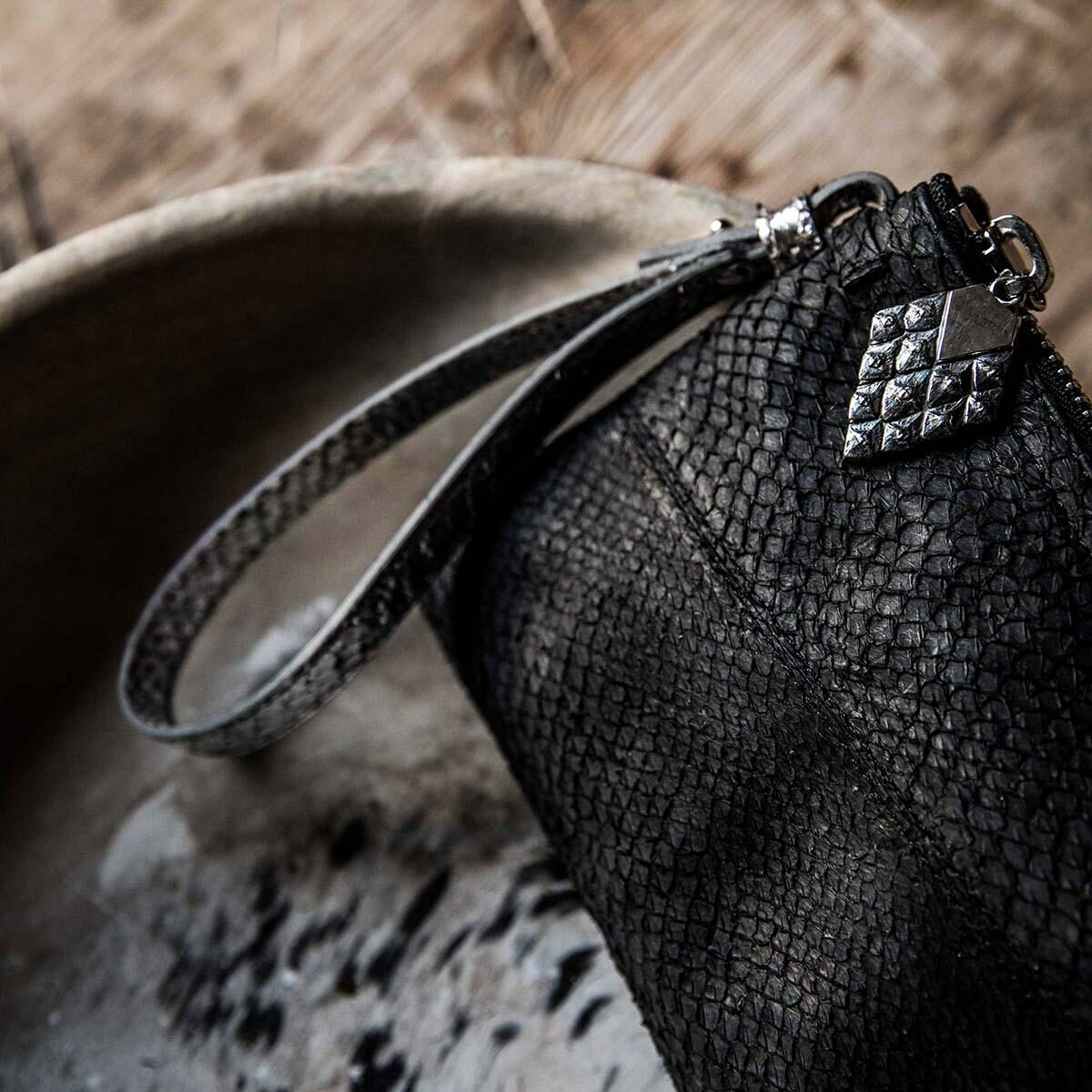
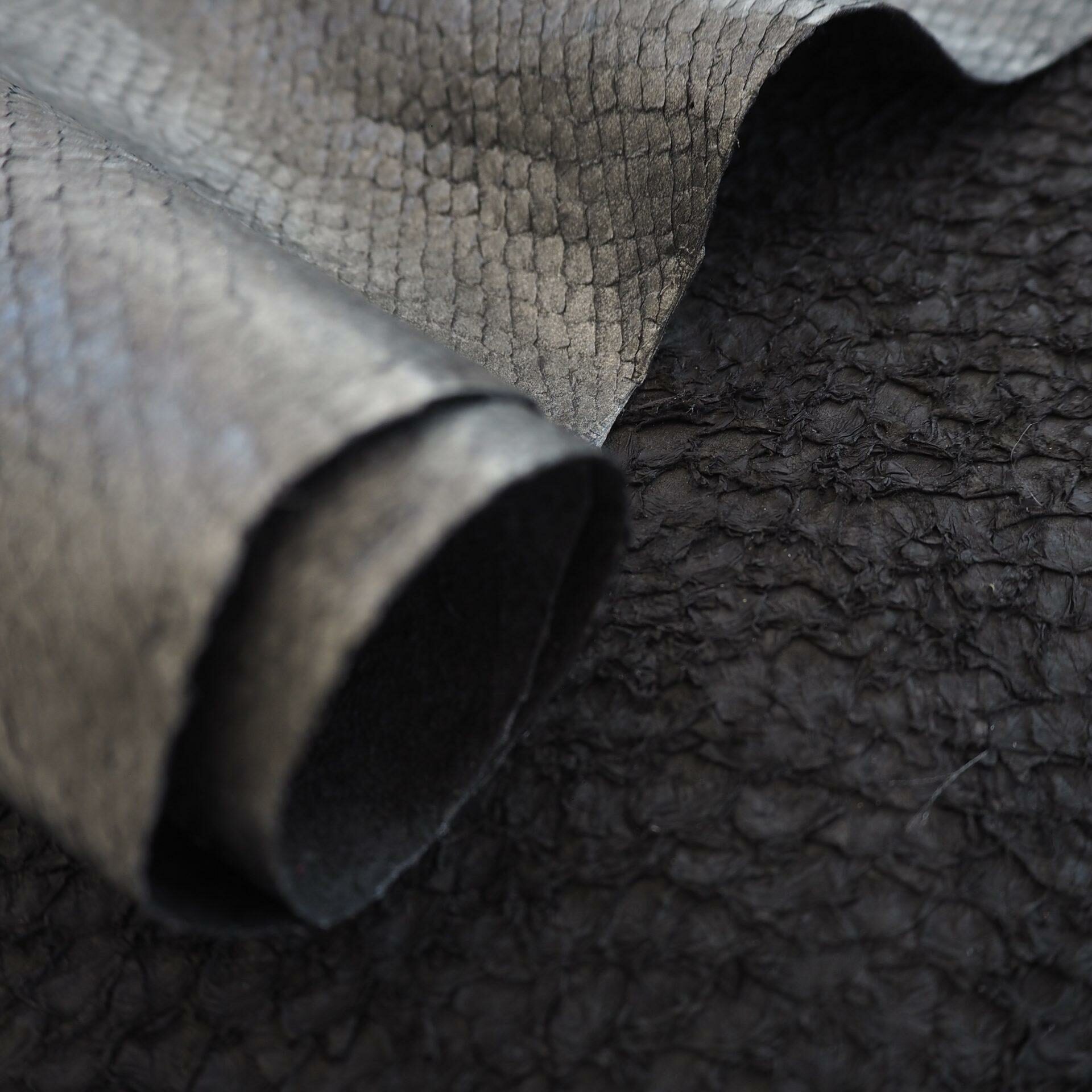
Greetings from Saudarkroki
“At the beginning of 2020 be decided to stop our other functions and product lines and focus fully on the development and improvement of the fish leather tanning process and finishing techniques. Our main goal is to produce fish leather as sustainably as possible. We buy the raw materials only from certified partners that focus on sustainability and we ourselves only utilise green energy in our entire production. All the electricity we use is from hydropower and the warm water comes from a local geysir.
For long, salmon leather has been an undervalued material that has wound up in the dumpster. However, we are glad to have found a solution to utilise this excess material to create quality leather for many different uses.”
-Hlynur Ársælsson, Nordic Fish Leather
Always room for improvement
We are already doing some amazing things together with Nordic Fish Leather by utilising an otherwise dumpster-bound material in our bags. However, to diminish the environmental burden caused by the products we must continuously develop. So, there is always room for improvement.
The salmon leather we use is not without any ethical issues, because it does come from salmon farmed only for the purpose of food production. As long as this continues, the excess material will be birthed by this function. So, for now we want to use this resource, but we feel the fish farming industry in its current form is not truly sustainable for the good of our planet. So, if the situation becomes so that there is no more excess from commercial fishing, we may also look elsewhere for this type of material, as using specifically salmon is not our goal, but utilising excess, whatever it may be at a given time.
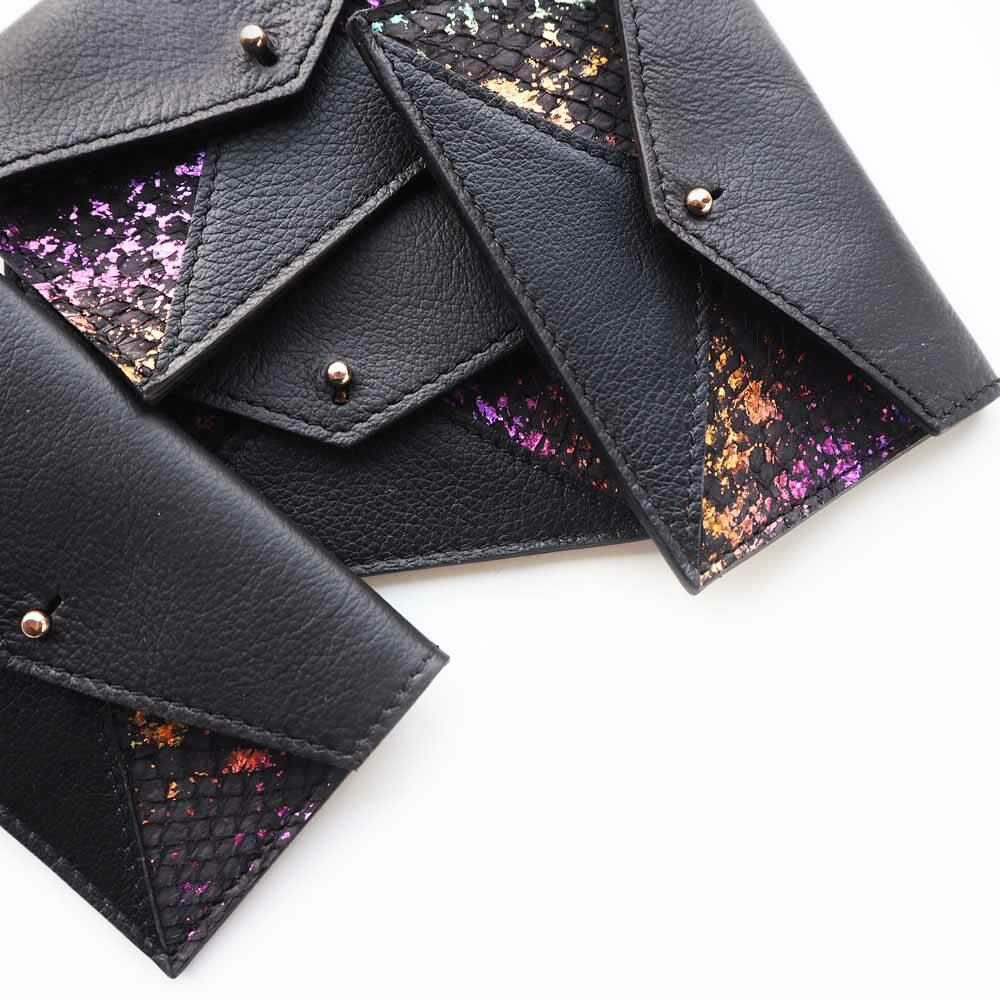
Nordic Fish Leather
Perch leather
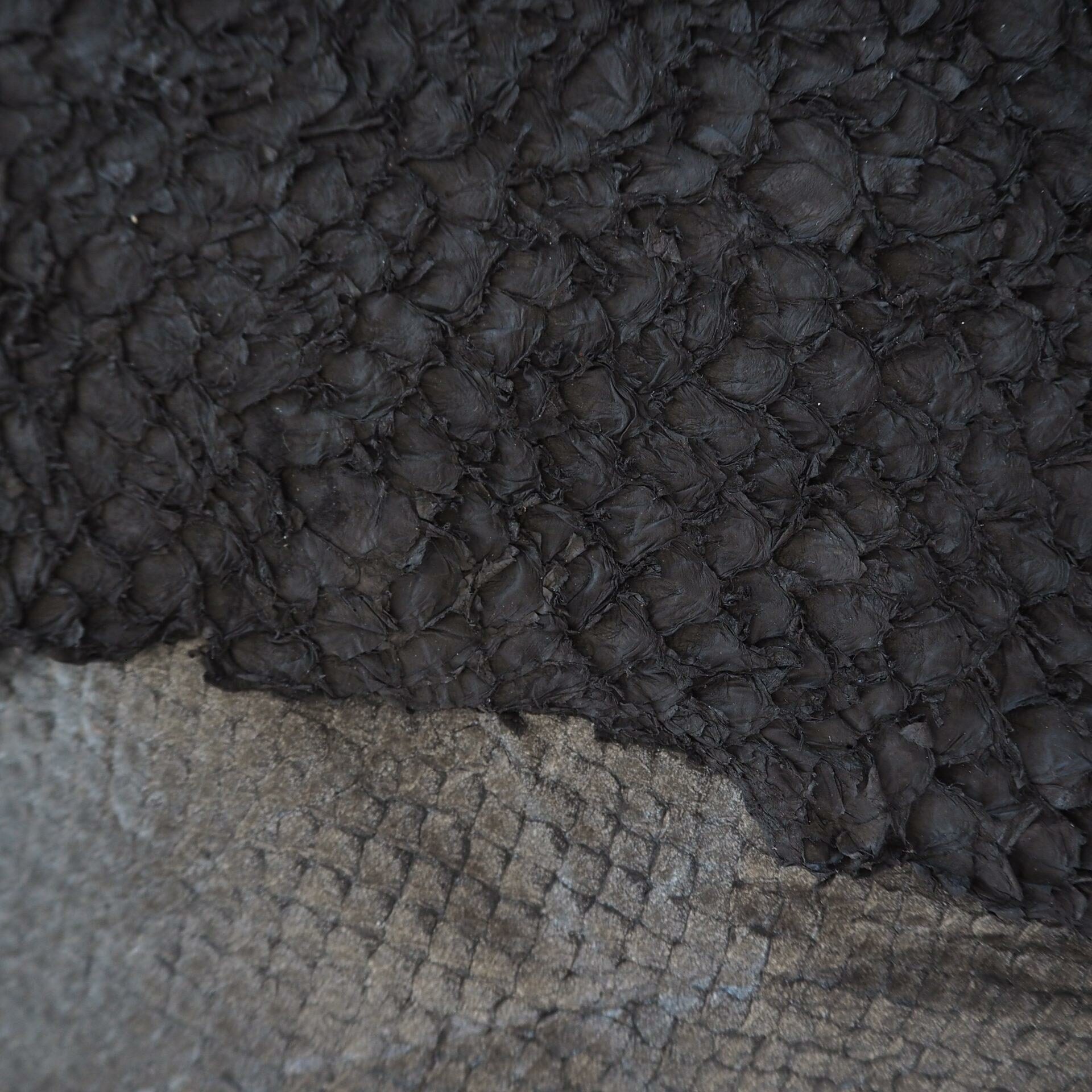
Quality from Iceland
At the heart of circular thinking lies the thought of utilising already existing materials as efficiently as possible instead of creating whole new ones. This is what our collaboration with Nordic Fish Leather also boils down to, as we give fish leather a new life.
Nordic Fish Leather is located in Sauðárkróki, a small but vivid 3000 person community in the fjord of Skagafjörður in Iceland. The business idea behind Nordic Fish Leather was created from the want to bring ancient craftsmanship to modern days by producing high quality fish leather from the excess of the fishing industry. From small epiphanies something greater can be born - one man’s trash can truly become another’s treasure.
ESTABLISHED: 2020
LOCATION: SAUÐÁRKRÓKI, ICELAND
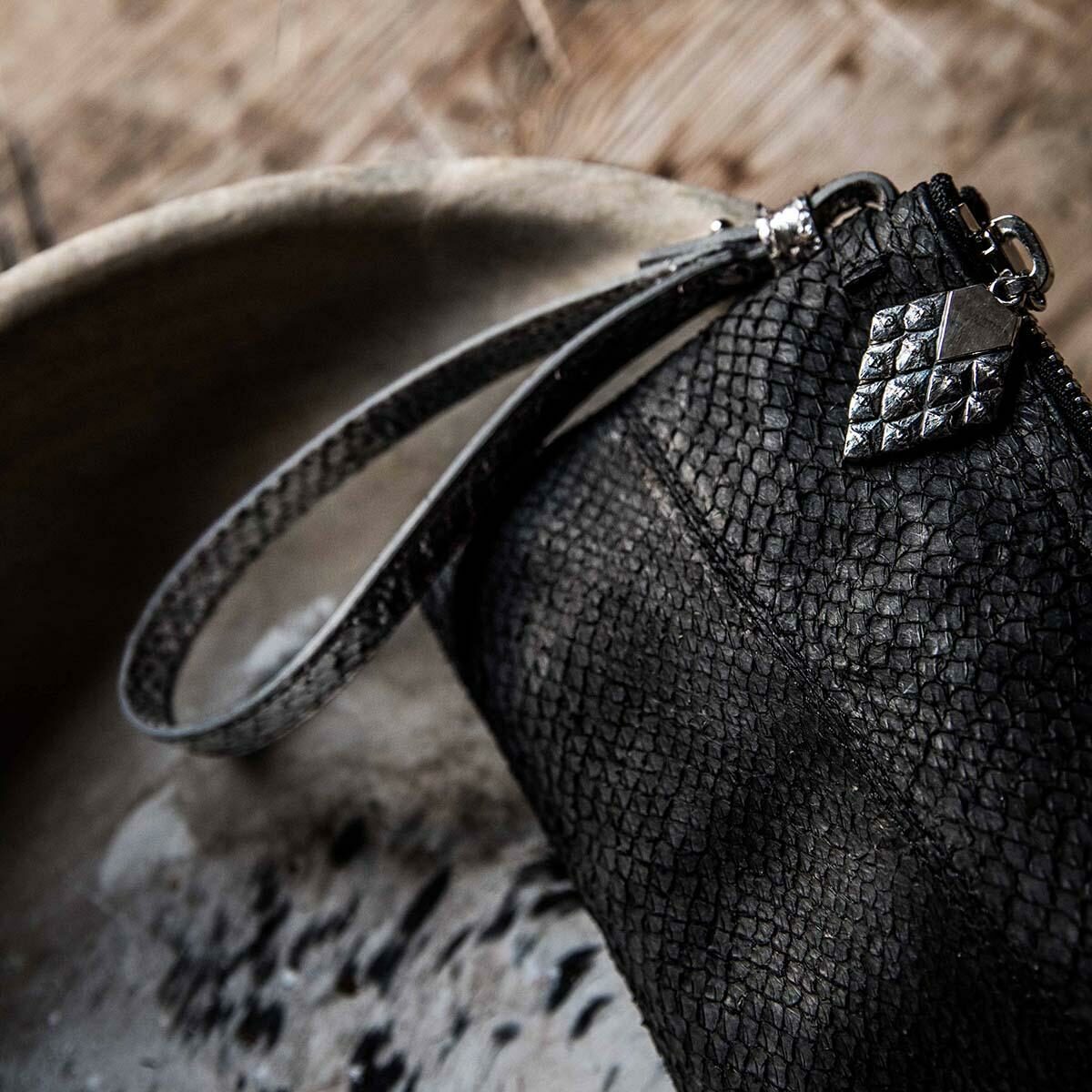
From food industry trash to material for bags
Iceland is a fisher nation surrounded by the ocean, and for centuries they have utilised fish leather as for example material for shoes to keep their feet warm in the cold harsh winters. Excess fish skins are still used rather rarely, and it ends up in the bin, despite its high quality and durability. We want to change this and make the resource utilised to diminish the requirement for new natural resources.
As a material perch skin is thicker than salmon, soft but also incredibly strong. We at Lovia use it in our smaller bags as well as details for larger models, such as front panels and handles.
So now you know, how we use the fish skins, but how do they end up in our use in the first place? The perch skins used by Nordic Fish Leather were part of a special project, that was conducted in Tanzania at Lake Victoria. The project taught locals fishing skills and gave them equipment. As they fished the perch from the lake, the locals and their families ate the fish and Nordic Fish Leather (then called Atlantic Leather), took the skins and tanned them to use. The project is now finished and you can no longer find the perch skin from our bags. Instead, we currently have salmon leather in our collection.
Instead of the fate in the trash bin, Nordic Fish Leather collects fish skins and tans and colours them for use. Tanning is the process that makes the leather even more durable and adaptable. After this, the material travels from Iceland via ship freight to the table of our designer Outi in Helsinki.
Greetings from Saudarkroki
“At the beginning of 2020 be decided to stop our other functions and product lines and focus fully on the development and improvement of the fish leather tanning process and finishing techniques. Our main goal is to produce fish leather as sustainably as possible. We buy the raw materials only from certified partners that focus on sustainability and we ourselves only utilise green energy in our entire production. All the electricity we use is from hydropower and the warm water comes from a local geysir.
For long, salmon leather has been an undervalued material that has wound up in the dumpster. However, we are glad to have found a solution to utilise this excess material to create quality leather for many different uses.”
-Hlynur Ársælsson, Nordic Fish Leather
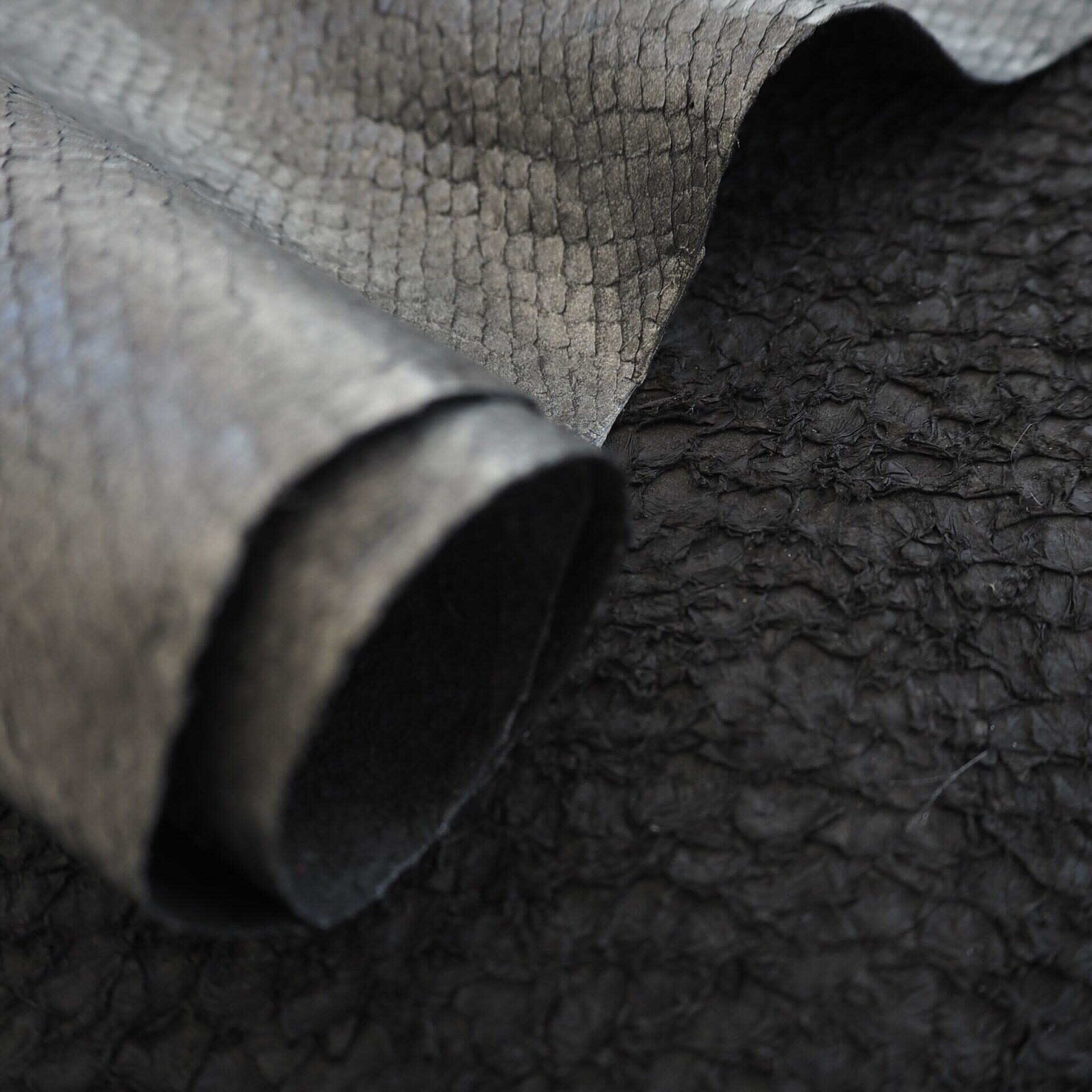
Always room for improvement
We are already doing some amazing things together with Nordic Fish Leather by utilising an otherwise dumpster-bound material in our bags. However, to diminish the environmental burden caused by the products we must continuously develop. So, there is always room for improvement.
The salmon leather we use is not without any ethical issues, because it does come from salmon farmed only for the purpose of food production. As long as this continues, the excess material will be birthed by this function. So, for now we want to use this resource, but we feel the fish farming industry in its current form is not truly sustainable for the good of our planet. So, if the situation becomes so that there is no more excess from commercial fishing, we may also look elsewhere for this type of material, as using specifically salmon is not our goal, but utilising excess, whatever it may be at a given time.

